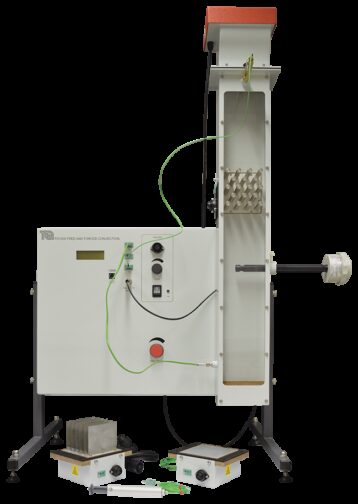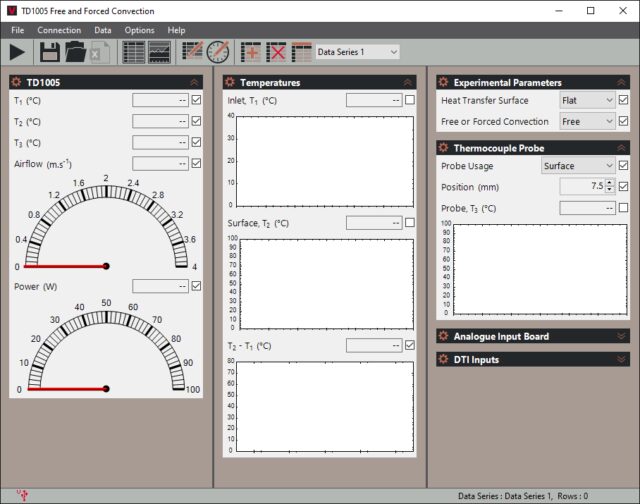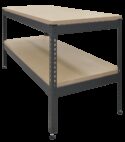Experiment
TD1005

FREE AND FORCED CONVECTION EXPERIMENT
An experimental apparatus to examine free and forced convection from a flat plate, a plate with fins and a plate with rods.
If you have any questions or you'd like to discuss a product, please call us.
+44 1159 722 611FREE AND FORCED CONVECTION EXPERIMENT
The bench-mounting equipment includes a vertical duct that holds the chosen heat transfer surface and all instruments needed.
TecQuipment include three different common heat transfer surfaces with the equipment:
- A Flat Plate
- A Pinned Surface – similar to a tubular heat exchanger
- A Finned Surface – similar to the fins on air-cooled engines or electrical heat sinks
Each surface has its own built-in variable-power electric heater. Students choose which surface they need to test and fit it to the duct using simple fixings.
For free convection tests, the heated air rises from the surface and up the duct. For forced convection tests, a variable-speed fan draws air up through the duct and across the surface. Thermocouples measure the air temperature upstream and downstream of the surface and the temperature at the heat transfer surface. The downstream probe moves in a traverse mechanism to measure the temperature distribution across the duct, allowing calculation of the bulk outlet temperature. An additional probe allows students to measure the temperature distribution along the extended surfaces of the pinned and finned heater transfer surfaces. A sensitive anemometer measures the air velocity.
Two controls allow students to set different air velocities and heater power for a full range of tests.
A digital display shows the heater power, air velocity and the temperatures measured by the thermocouples.
You can do tests with or without a computer connected. However, for quicker tests with easier recording of results, TecQuipment can supply the optional Versatile Data Acquisition System (VDAS®). This gives accurate real-time data capture, monitoring and display, calculation and charting of all the important readings on a computer.
Learning outcomes
- Comparing free and forced convection for different surfaces
- Comparison of free convection from vertical and horizontal (finned) surfaces
- Comparison of heat transfer surface efficiency
- Comparing the coefficient of heat transfer and Nusselt Number for forced and free convection
- Temperature distribution along finned and pinned surfaces












